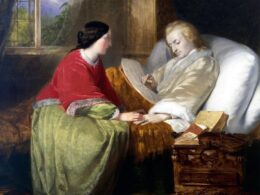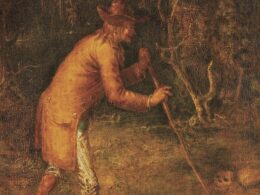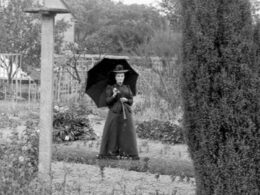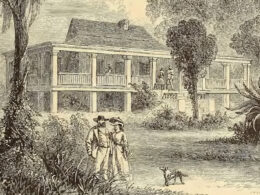From Kate Chopin: Complete Novels & Stories

From Chopin’s story: “He took refuge at one of the small tables of a café, called for a ‘Mazarin,’ and, so seated for an unheeded time, let the panorama of Paris pass before his indifferent eyes.”
Kate Chopin initially gained national prominence with sketches of local color—her much-admired Creole stories. Yet from the beginning she dealt with more mature themes, featuring young female protagonists constrained by traditional domestic settings, released by newfound independence, torn by emotional awakenings, or tempted by the stirrings of “guilty love”—to use the euphemism coined by William Dean Howells. She also explored the clash between marital obligations and, as she put it, “a woman’s intellectual existence.” Such stories anticipated her masterpiece, The Awakening.
In fact, Chopin’s very first story—which she destroyed—was rejected because it contained an “incident not desirable to be handled.” Later stories faced similar objections and dismissals until she sent two stories, one after the other, to a new upstart magazine called Vogue. Backed with funds from the likes of Cornelius Vanderbilt and Marion Fish, the weekly gazette at first was read as much for its high-society news as for its fashion coverage. For the first eight years, Vogue’s editor-in-chief was the journalist Josephine Redding, an unconventional socialite known for her trove of oversize hats, her refusal to wear corsets, and a dedication to animal welfare causes.
Under Redding’s guidance, the magazine accepted both of Chopin’s stories, “A Visit to Avoyelles” and “Désirée’s Baby,” and published them together in Vogue’s fifth issue. (The latter became, and remains, one of the most famous short stories of the nineteenth century.) During the rest of the 1890s, seventeen additional stories by Chopin appeared in Vogue—including several that no other publication would touch. Chopin’s recent biographer Emily Toth remarks, “While few well-known American writers appeared in Vogue (and no other local colorists), Kate Chopin found in its pages her own showcase, and she used it to experiment with a more radical realism and a less traditional—and less happy—view of the world.”
Before Chopin and Vogue found each other, however, some of her more adventurous stories appeared in local publications. A few months after the rejection of her first story, “A Point at Issue!” appeared in the St. Louis Post-Dispatch; it is a satirical comedy about a pair of newlyweds who believe that their marriage should “in no wise to touch the individuality of either” and who test that belief by living 3,500 miles apart for most of the year.
You can read it at our Story of the Week site, with a brief introduction outlining Chopin’s early career as a writer.



